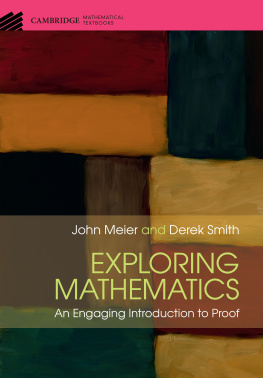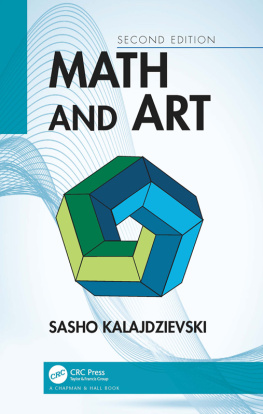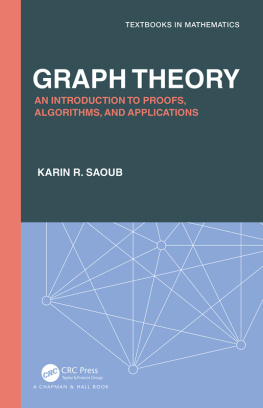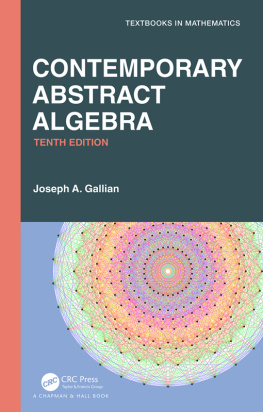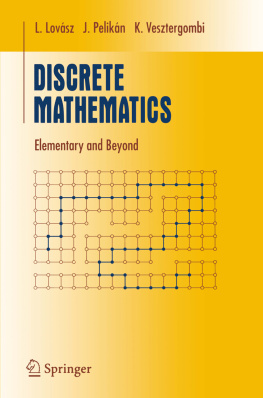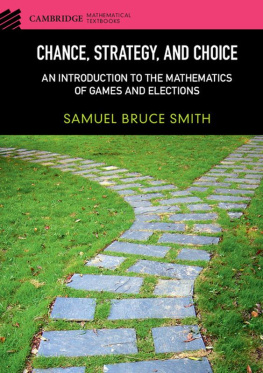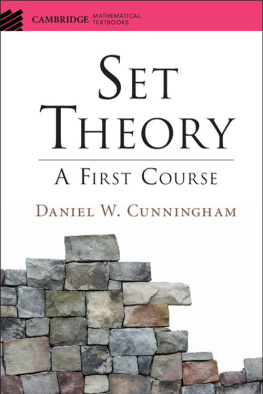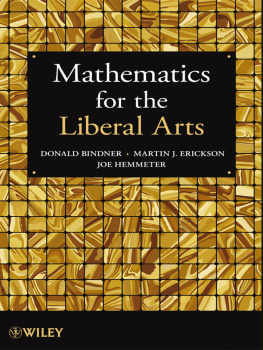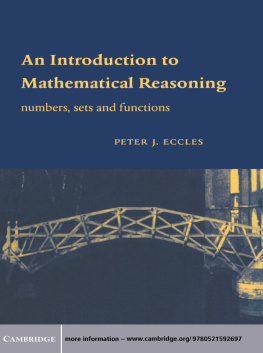Exploring Mathematics
An Engaging Introduction to Proof
Exploring Mathematics gives students experience with doing mathematics interrogating mathematical claims, exploring definitions, forming conjectures, attempting proofs, and presenting results and engages them with examples, exercises, and projects that pique their curiosity. Written with a minimal number of pre-requisites, this text can be used by college students in their first and second years of study and by independent readers who want an accessible introduction to theoretical mathematics. Core topics include proof techniques, sets, functions, relations, and cardinality, with selected additional topics that provide many possibilities for further exploration.
With a problem-based approach to investigating the material, students develop interesting examples and theorems through numerous exercises and projects. In-text exercises, with complete solutions or robust hints included in an appendix, help students explore and master the topics being presented. The end-of-chapter exercises and projects provide students opportunities to confirm their understanding of core material, learn new concepts, and develop mathematical creativity.
John Meier is the David M. 70 and Linda Roth Professor of Mathematics at Lafayette College, where he also served as Dean of the Curriculum. His research focuses on geometric group theory and involves algorithmic, combinatorial, geometric, and topological issues that arise in the study of infinite groups. In addition to teaching awards from Cornell University and Lafayette College, Professor Meier is the proud recipient of the James Crawford Teaching Prize from the Eastern Pennsylvania and Delaware section of the Mathematical Association of America.
Derek Smith is Associate Professor of Mathematics at Lafayette College. His research focuses on algebra, combinatorics, and geometry. He has taught a wide variety of undergraduate courses in mathematics and other subjects in both the United States and Europe. He is the recipient of multiple teaching awards at Lafayette, and his work has been supported by the Mathematical Association of America and the National Science Foundation. Professor Smith is a former editor of the problem section of Math Horizons .
CAMBRIDGE MATHEMATICAL TEXTBOOKS
Cambridge Mathematical Textbooks is a program of undergraduate and beginning graduate level textbooks for core courses, new courses, and interdisciplinary courses in pure and applied mathematics. These texts provide motivation with plenty of exercises of varying difficulty, interesting examples, modern applications, and unique approaches to the material.
Advisory Board
John B. Conway, George Washington University
Gregory F. Lawler, University of Chicago
John M. Lee, University of Washington
John Meier, Lafayette College
Lawrence C. Washington, University of Maryland, College Park
A complete list of books in the series can be found at www.cambridge.org/mathematics Recent titles include the following:
Chance, Strategy, and Choice: An Introduction to the Mathematics of Games and Elections , S. B. Smith
Set Theory: A First Course , D. W. Cunningham
Chaotic Dynamics: Fractals, Tilings, and Substitutions , G. R. Goodson
Introduction to Experimental Mathematics , S. Eilers & R. Johansen
A Second Course in Linear Algebra , S. R. Garcia & R. A. Horn
Exploring Mathematics: An Engaging Introduction to Proof , J. Meier & D. Smith
A First Course in Analysis , J. B. Conway
University Printing House, Cambridge CB2 8BS, United Kingdom
One Liberty Plaza, 20th Floor, New York, NY 10006, USA
477 Williamstown Road, Port Melbourne, VIC 3207, Australia
4843/24, 2nd Floor, Ansari Road, Daryaganj, Delhi 110002, India
79 Anson Road, #0604/06, Singapore 079906
Cambridge University Press is part of the University of Cambridge.
It furthers the Universitys mission by disseminating knowledge in the pursuit of education, learning, and research at the highest international levels of excellence.
www.cambridge.org
Information on this title: www.cambridge.org/9781107128989
John Meier and Derek Smith 2017
This publication is in copyright. Subject to statutory exception and to the provisions of relevant collective licensing agreements, no reproduction of any part may take place without the written permission of Cambridge University Press.
First published 2017
Printed in the United States of America by Sheridan Books, Inc.
A catalogue record for this publication is available from the British Library.
ISBN 978-1-107-12898-9 Hardback
Cambridge University Press has no responsibility for the persistence or accuracy of URLs for external or third-party internet websites referred to in this publication and does not guarantee that any content on such websites is, or will remain, accurate or appropriate.
For Noah and Robert
Contents
Preface
Mathematics is a fascinating discipline that calls for creativity, imagination, and the mastery of rigorous standards of proof. This book introduces students to these facets of the field in a problem-focused setting. For over a decade, we and many others have used draft chapters of Exploring Mathematics as the primary text for Lafayettes Transition to Theoretical Mathematics course. Our collective experience shows that this approach assists students in their transition from primarily computational classes toward more advanced mathematics, and it encourages them to continue along this path by demonstrating that while mathematics can at times be challenging, it is also very enjoyable.
Here are some of the key features of Exploring Mathematics .
- The sections are short, and core topics are covered in chapters that present important material with minimal pre-requisites. This structure provides flexibility to the instructor in terms of pacing and coverage.
- Mathematical maturity requires both a facility with writing proofs and comfort with abstraction and creativity. We help students develop these abilities throughout the book, beginning with the initial chapters.
- A student does not learn mathematics by passive reading. It is through the creation of examples, questioning if results can be extended, and other such in-the-margin activities that a student learns the subject. We encourage this behavior by including frequent in-text exercises that serve not only to check understanding, but also to develop material.
- We construct many mathematical objects that are elementary in their definition and commonly referenced in upper-level classes. These are woven throughout the text, with related exercises providing numerous opportunities for independent investigations of their important properties.
- Each chapter concludes with a robust mixture of exercises ranging from the routine to rather challenging problems, and the book concludes with a collection of projects: guided explorations that students can work on individually or in groups.
These and other fundamental aspects of Exploring Mathematics are described in greater detail below, where we also indicate different ways an instructor can map out the material that can be covered in a single term.
An Active Approach
Our experience teaching courses that introduce students to mathematical proofs shows that the spirit of mathematics is effectively taught with a focus on problem-solving. It is in doing mathematics by exploring definitions, forming conjectures, and working on the writing of proofs that students begin to understand the discipline. We have packed into this book well over 600 exercises that engage students in these important activities.

